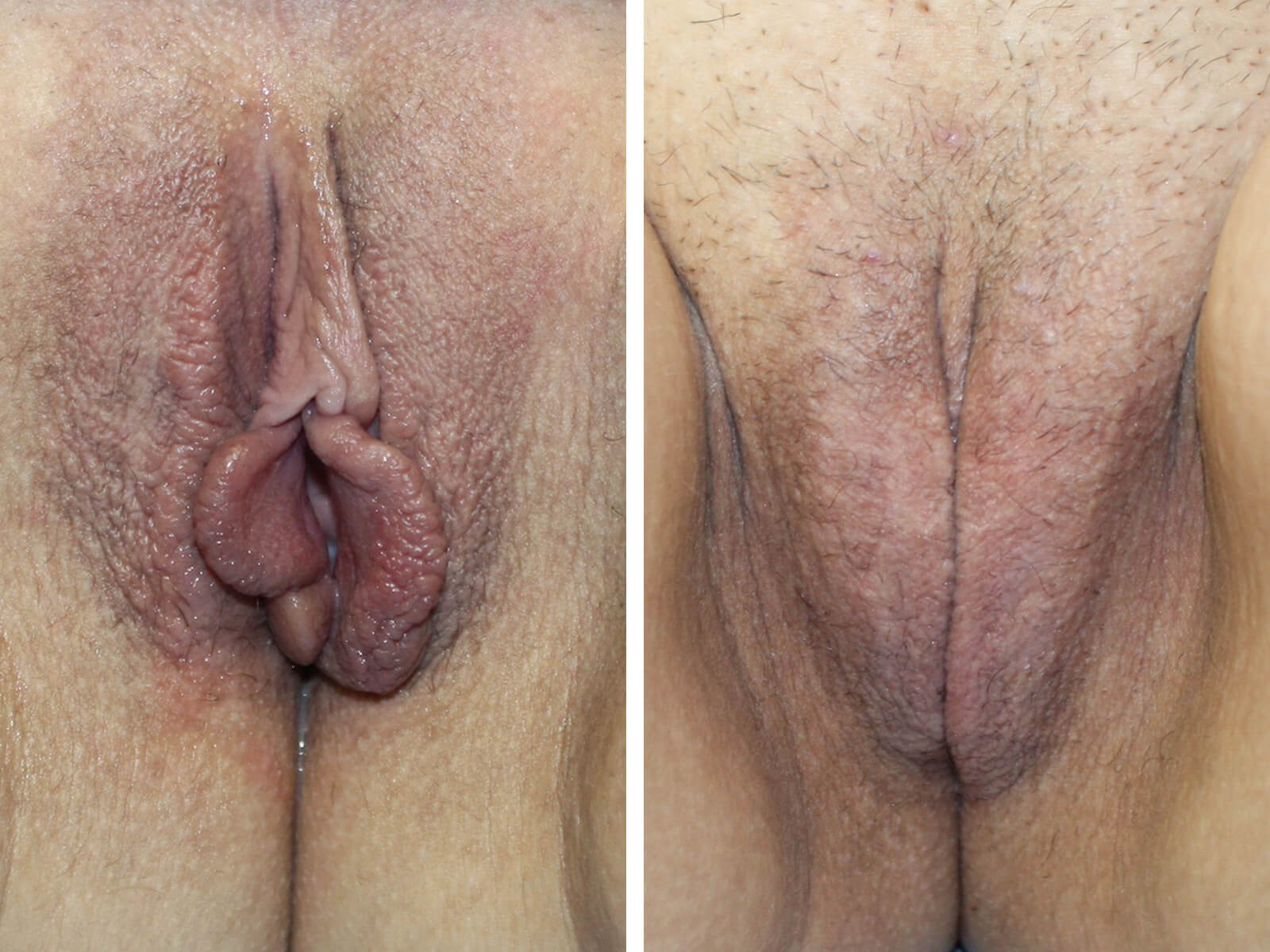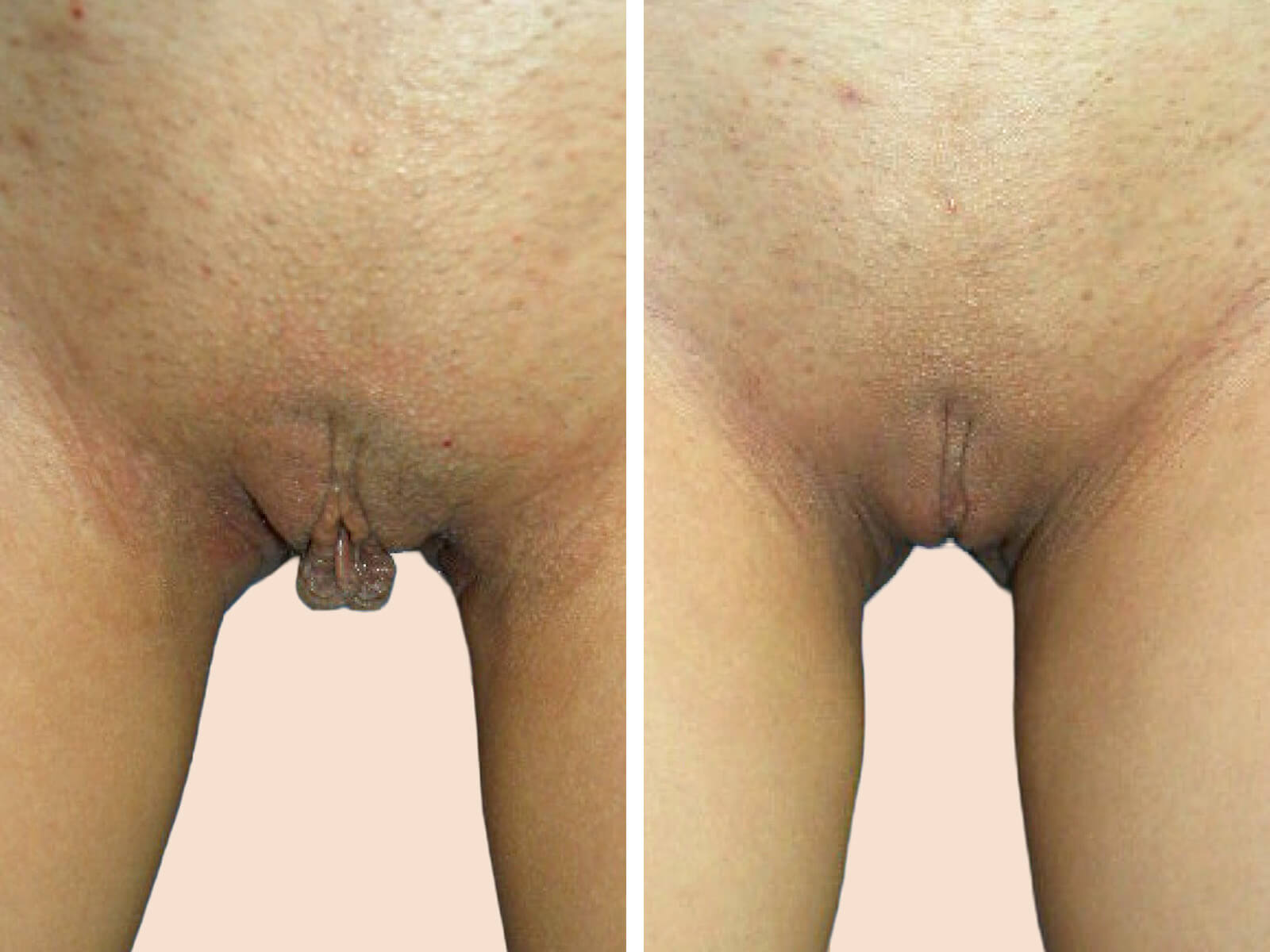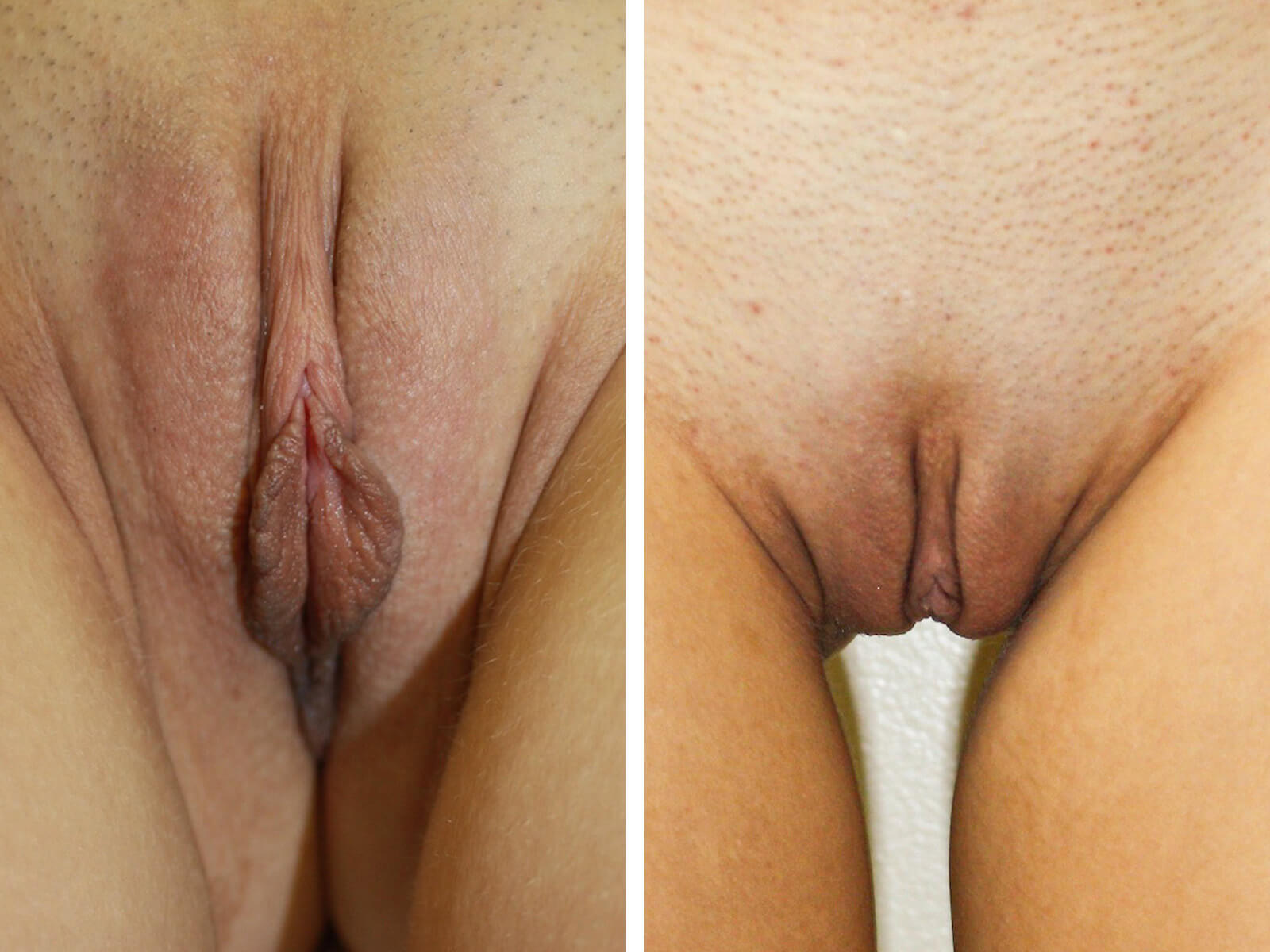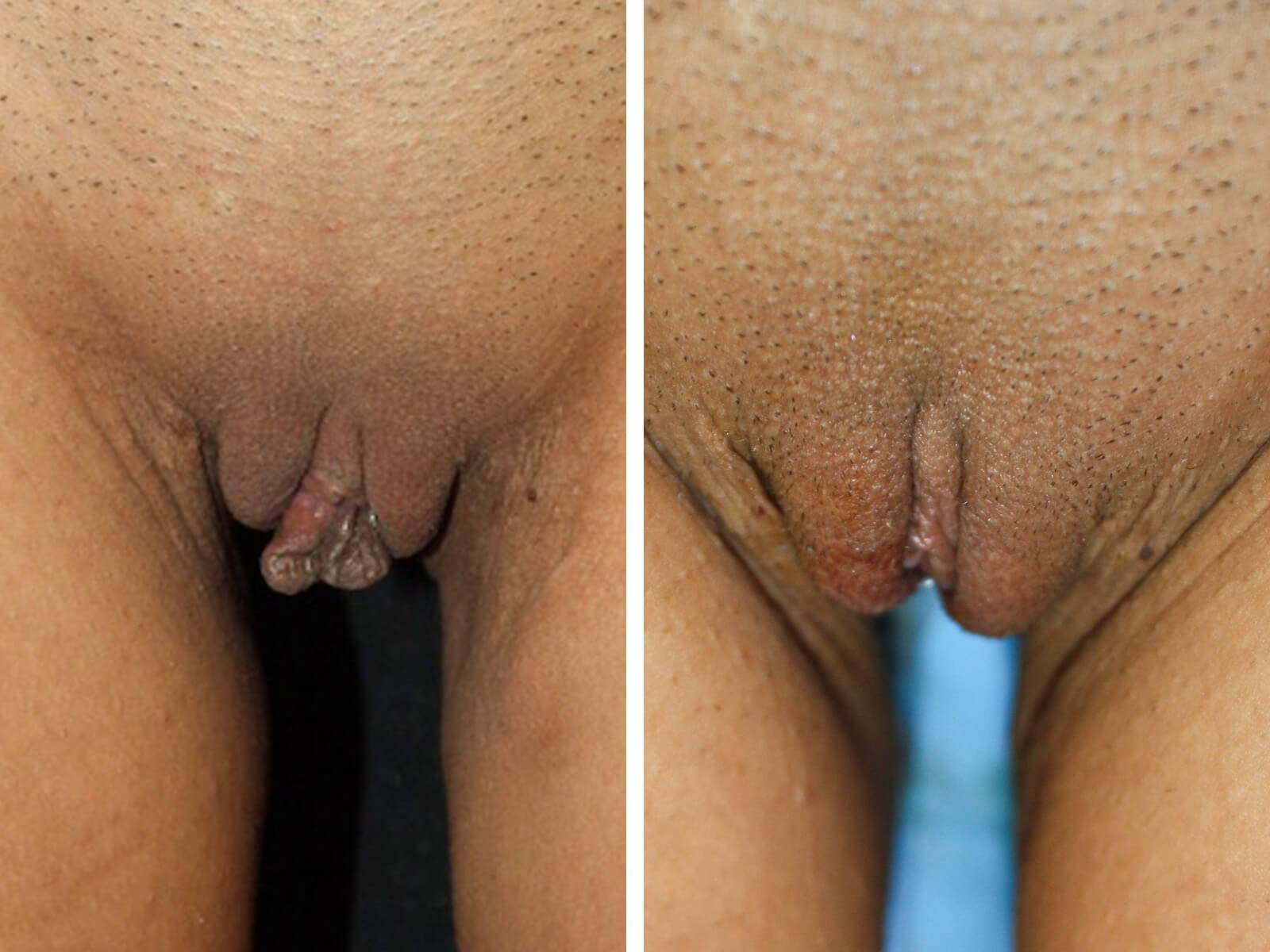Body Procedures
Labiaplasty
Labiaplasty, also known as labia reduction, vaginal lip reduction, or labia rejuvenation, is a procedure to decrease the size and improve the appearance of enlarged, hypertrophic, or asymmetrical Labia Minora (inner labia) and/or Labia Majora (outer labia).
The size, color, and shape of labia vary significantly and may change as a result of childbirth, aging, genital piercing, and other events. The enlarged labia may cause some women to experience discomfort with pinching or pulling during certain activities, or with some clothing.
The clitoral prepuce or the clitoral hood is the skin covering the clitoris. In some women, there is a thickening of the skin or redundancy, which interferes with the woman’s sexual response or is aesthetically displeasing. Labiaplasty can change the cosmetic appearance of the outer vagina and relieve pain and discomfort with certain sports and intercourse.
Photo Gallery
Labiaplasty: Before & After Photos
Anatomy
Key Areas Enhanced Through Labiaplasty
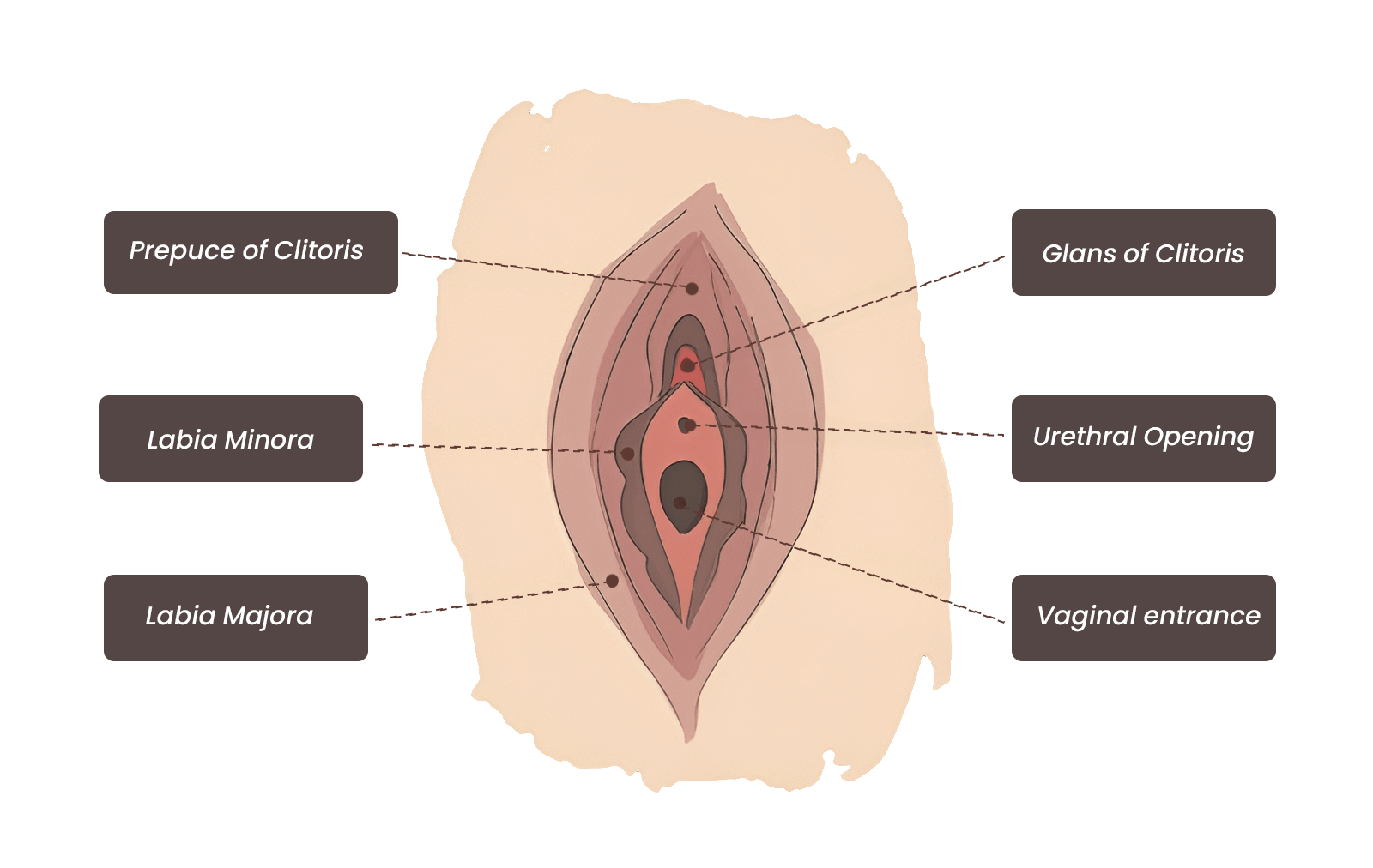
Our procedures are designed to address the cosmetic concerns involving the four major areas that comprise a woman’s external genitals:
Labia Minora – The inner lips can be made smaller, irregular shape or contour improved, and differences in the size of the two lips corrected. Our techniques preserve the natural pigmentation of the labia edges, with virtually no visible scarring.
Labia Majora – The outer lips can be made less puffy by liposuction or surgical excision. Drooping or sagging is corrected by skin removal, or plumped by fat injection
Clitoral Hood – Excess skin, sagging, and extra folds can be removed to contour the Clitoral Hood achieving a more normal appearance, with virtually no visible scars.
Mons Pubis – The Mons Pubis often sags with age or weight gain. It can be elevated and reduced in height and width, and bulging, prominent mons can be made flatter using liposuction. The resulting scars are usually hidden within the pubic hair.
Your Consultation
Before surgery, the patient’s detailed medical history is assessed, including information about the number of pregnancies and the history of the delivery methods, and a physical examination is conducted by the surgeon.
After the examination, the surgeon will discuss the anesthesia type, the incision site, and possible risks and complications. Pre-operative instructions may include the elimination of certain drugs and smoking habits.
The Ideal Candidate
The ideal candidate for labiaplasty is someone who feels discomfort, self-consciousness, or dissatisfaction with the appearance or functionality of their labia.
Candidates should be in good overall health, emotionally ready for the procedure, and have realistic expectations about the results.
If this sounds like you, know that thousands of women receive this procedure yearly. Consulting with an experienced and compassionate surgeon team at Beverly Hills Cosmetic Surgery can help you explore options, answer your questions, and determine if labiaplasty is the right choice. This is a deeply personal decision, and we’re here to support you every step of the way.
The Procedure
Labiaplasty is an outpatient procedure performed under local anesthesia with or without IV sedation. Depending on the extent of correction required and whether it is combined with procedures such as Hoodplasty, it should take 1 to 2 hours to complete. If IV sedation is given, an adult must accompany you, and you will not be able to operate a motor vehicle after discharge.
Before initiating the procedure, the excess skin to be resected is measured and marked. The area is injected with a local anesthetic, fine incisions are made at the edge of the skin folds, excess tissue is trimmed to achieve the desired shape and size, and the edges are closed using absorbable sutures.
Recovery
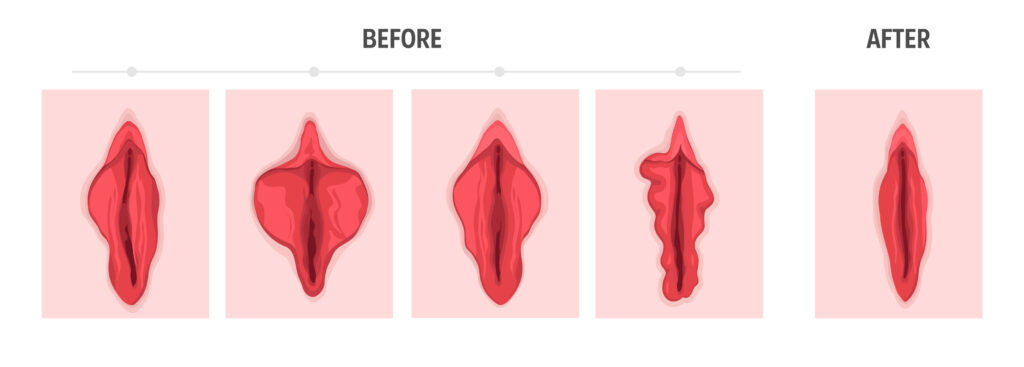
All patients are sent home with prescriptions for pain medication and antibiotics to ease mild to moderate swelling and bruising in the first few days.
Most patients feel well enough to return to work 1 to 2 days after the Labiaplasty. Full healing and return to regular activities, sports, and sexual intercourse take approximately 4 to 6 weeks. All sutures used are absorbable and do not need to be removed. You may shower one to two days after surgery. Most of the discomfort will be over after 3 or 4 days.
Restorative Procedures
What procedure is best after giving birth?
Women commonly ask about a change in sexual sensation after giving birth. Vaginal delivery can cause stretching and relaxation of the vaginal vault muscles and is often associated with bladder incontinence.
Labiaplasty is not the procedure of choice for those issues, however, the CO2 Laser Tightening or FemiLift procedure will improve and correct these symptoms.
have a question?
Labiaplasty: Frequently Asked Questions
When can I return to work post-labiaplasty surgery?
Most patients return to work 2 to 4 days after surgery with some restrictions: avoid heavy lifting, sports, and exercising for about 4-6 weeks.
When can I resume sexual activity after Labiaplasty surgery?
Sexual activity usually can resume about six weeks after the Labiaplasty surgical procedure.
Will my sexual partner notice a difference after my Labiaplasty surgery?
Visually, you and your partner should notice the changes, and if the labia interferes with intercourse, both of you should notice an improvement.
Will Labiaplasty surgery result in decreased sensation?
Temporary numbness may occur after the surgical procedure but should resolve within the first few weeks. You should not notice any loss of pleasurable sensation after recovery.
Will Labiaplasty alter the skin surrounding my clitoris?
Usually, this area is not altered during the surgery. Some women have excessive skin in this area that can be trimmed to give a more pleasing and natural appearance. This can be discussed during your consultation.
What are the different techniques?
The three most common techniques are edge resection, central wedge resection, and de-epithelialization technique. During your consultation, these techniques are discussed and based on the physical examination the most appropriate technique will be selected.

